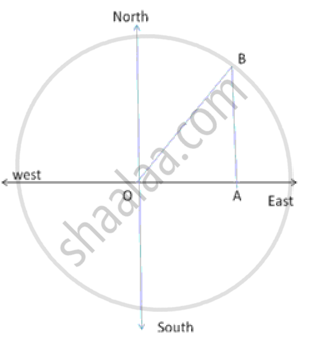Advertisements
Advertisements
प्रश्न
Find the Pythagorean triplet from among the following set of numbers.
4, 7, 8
उत्तर
It is known that, if in a triplet of natural numbers, the square of the biggest number is equal to the sum of the squares of the other two numbers, then the three numbers form a Pythagorean triplet.
The given set of numbers is (4, 7, 8).
The biggest number among the given set is 8.
82 = 64; 72 = 49; 42 = 16
Now, 16 + 49 = 65 ≠ 64
∴ 42 + 72 ≠ 82
Thus, (4, 7, 8) does not form a Pythagorean triplet.
संबंधित प्रश्न
In a ∆ABC, AD ⊥ BC and AD2 = BC × CD. Prove ∆ABC is a right triangle
Prove that the sum of the squares of the diagonals of parallelogram is equal to the sum of the squares of its sides.
ABC is a triangle right angled at C. If AB = 25 cm and AC = 7 cm, find BC.
In triangle ABC, AB = AC = x, BC = 10 cm and the area of the triangle is 60 cm2.
Find x.
Find the Pythagorean triplet from among the following set of numbers.
9, 40, 41
A man goes 10 m due east and then 24 m due north. Find the distance from the straight point.
From the given figure, in ∆ABQ, if AQ = 8 cm, then AB =?

For going to a city B from city A, there is a route via city C such that AC ⊥ CB, AC = 2x km and CB = 2(x + 7) km. It is proposed to construct a 26 km highway which directly connects the two cities A and B. Find how much distance will be saved in reaching city B from city A after the construction of the highway.
In ∆PQR, PD ⊥ QR such that D lies on QR. If PQ = a, PR = b, QD = c and DR = d, prove that (a + b)(a – b) = (c + d)(c – d).
Two angles are said to be ______, if they have equal measures.
